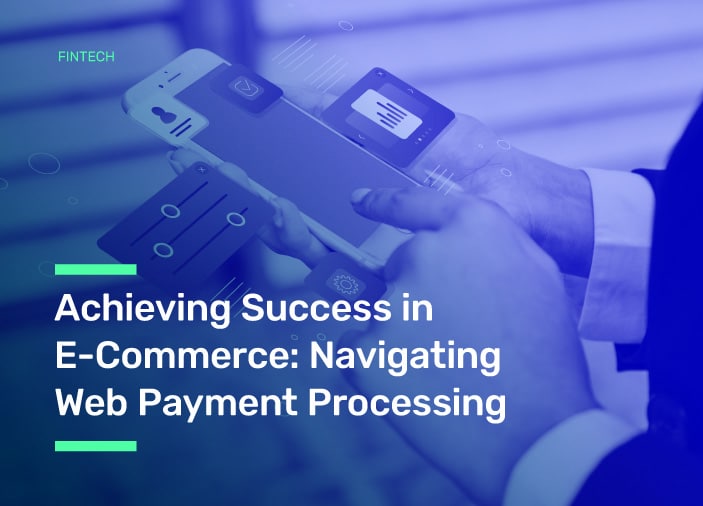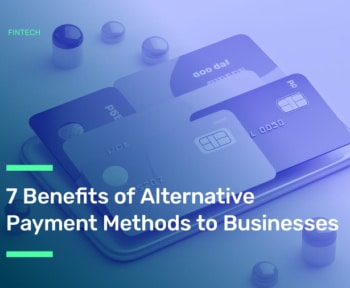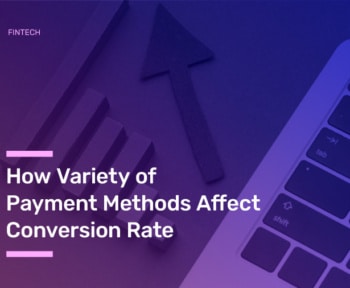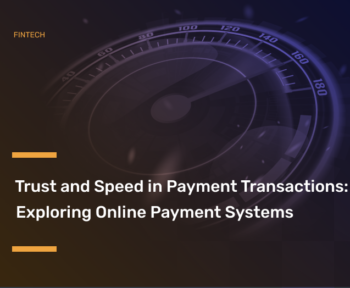
Table of Contents
- Why Efficient Payment Processing Is Essential?
- How Does E-Commerce Payment Processing Work?
- The Impact Of Poor Payment Processing On E-Commerce
- Practical Tips for Simplifying the Payment Processing
- Turning Diversity To Competitive Advantage In Payment Processing
- Conclusion
E-commerce is expanding an ever more significant portion of global sales. According to research, the e-commerce platform market size was valued at USD 5.8 billion in 2022. This is projected to grow from USD 6.58 Billion in 2023 to USD 18.12 billion by 2032. The rapid expansion of big data analytics and ongoing technological progress are the key market drivers enhancing growth. In that case, payment processing technologies are one of the critical technological developments that lead to peak growth in e-commerce. In this article, we’ll dive into the key payment process developments in e-commerce.
Why Efficient Payment Processing Is Essential?
In the e-commerce ecosystem, efficient payment processing is the backbone of a successful online business. It encompasses all the activities in accepting and processing payment, ensuring a frictionless and secure transaction experience. Let’s explore why efficient payment processing is crucial for online businesses by step:
Seamless Customer Experience:
In the fast-paced digital landscape, customers expect a seamless purchasing experience. A well-optimized payment process eliminates friction points, making it easy for customers to complete their transactions. From a user-friendly interface to quick loading times and straightforward payment steps, efficient payment processing enhances the overall customer experience.
Increased Conversions:
A confusing payment process can significantly impact conversion rates. Customers who encounter difficulties during checkout, such as long loading times, complex checkout forms, or even limited payment options, are more likely to abandon their carts.
According to the study, 18% abandon carts due to checkout pages that are too long and don’t provide a seamless experience. Therefore, optimizing payment processing reduces the chances of abandoned transactions, thereby increasing conversions and maximizing revenue potential.
Customer Retention:
Customer satisfaction creates brand loyalty and increases income. By providing a well-designed payment experience, you enhance customer satisfaction and increase customer loyalty. When customers have a positive experience during the payment processing, they are more inclined to return to your online store for future purchases.
Trust also affects customer retention. On the other hand, efficient payment processing builds trust and confidence in customers. Customers who feel that their payment information is handled securely and professionally are more likely to complete the payment processing. Conversely, a poor payment experience can damage trust, leading to a negative perception of your brand and potential loss of future business.

How Does E-Commerce Payment Processing Work?
An efficient e-commerce payment processing requires the involvement of different third parties, including payment service providers (PSPs), alternative payment methods (APMs), and payment orchestration platforms (POPs).
Once the customer clicks on the “pay” button, the transaction must undergo several crucial steps to be verified and securely processed.
Here’s a simplified transaction of e-commerce payment processing:
- Firstly, the customer initiates the payment by adding a product to their basket and entering their card details and other personal information at the checkout page. These details are encrypted to ensure secure digital transmission.
- A payment orchestration platform is an intermediary between the e-commerce merchant, the payment processor, and the customer’s bank or card issuer. Once the platform has received encrypted payment details from the merchant’s website, it sends an authorization request to the customer’s bank or card issuer. The bank then verifies that the person attempting payment is the cardholder and that they have sufficient funds available for the transaction.
- The payment service processor also plays a key role in this stage of payment processing. The card details are sent to the PSP via the payment orchestration platform or its payment gateway feature, and it’s the processor that notifies the issuing bank and then communicates the card network’s decision back to the payment orchestration platform, which, in turn, relays it to the merchant. If authorized, the customer will receive confirmation in their browser window and an email receipt.
- After that, an acquirer allows merchants to accept electronic card payments from their customers. Once the transaction has been approved, the funds are debited from the customer’s account and credited to the merchant’s bank account via the acquirer.

The Impact Of Poor Payment Processing On E-Commerce
Customers who encounter difficulties, encounter errors, or experience confusion during payment processing may choose to abandon their purchase. Since customers usually associate a poor payment experience with the overall quality and reliability of a brand, poor payment processing means missed opportunities for customer retention.
According to an analysis by Stripe, 85% of e-commerce shoppers abandon an online purchase if their preferred payment method is not offered as an option at checkout. This research shows that not only payment failures or delayed processing but also a lack of payment options lead to damaged business reputation.
Practical Tips for Simplifying the Payment Processing
Optimizing payment performance is crucial for online businesses to ensure seamless and successful transactions. As we mentioned, transaction failures and delays can lead to negative brand awareness, abandoned carts, and lost revenue.
So, to eliminate such situations, here are the practical tips for having seamless payment processing:
- Minimize Checkout Form Fields: Only ask for essential information during the checkout process. Remove unnecessary fields that can create friction and slow down the payment processing. Implement autofill features to help customers quickly complete their information.
- Clear Progress Indicators: Displaying the progress of the checkout process through visual indicators, such as progress bars or step numbers helps customers understand how many steps are remaining, creating a sense of control and reducing anxiety.
- One-Page Checkout: Aiming for a one-page checkout process that consolidates all necessary information and actions on a single page eliminates the need for customers to navigate through multiple pages, saving time and effort.
- Smart Selections: Pre-selecting commonly chosen options based on the customer’s location or previous preferences reduces the number of decisions customers need to make, simplifying the process and expediting their checkout experience.
- Error Handling and Validation: Implementing real-time validation and error messages to help customers quickly identify and resolve any issues with their input. Clearly explain any errors and guide how to rectify them, ensuring a seamless progression through the payment process.
You can also check out our article, Reducing Cart Abandonment & Boosting Conversion Rates Part 1 and Part 2, which indicates practical tips on reducing cart abandonment and increasing conversion rates.
Turning Diversity To Competitive Advantage In Payment Processing
New players and new methods are emerging every day in the online payment world. This diversity brings important opportunities for businesses that process payments online.
Offering customers different payment options on a website increases turnover and customer satisfaction. For this, it becomes essential to work with other domestic or international payment players. However, integrating these methods separately and managing them from different panels requires a significant amount of time and operations.
Craftgate offers an important solution for businesses that want to make the most of this diversity in online payments. It provides a single point of access to payment service providers located in different countries, including alternative payment methods. Craftgate also offers turnover increase, cost advantage, and high customer satisfaction with solutions such as Autopilot, Smart and Dynamic Payment Routing, Card Storage, Closed Loop Wallet, and Shopping Loan.
Conclusion
As can be seen, businesses must optimize their payment processes to capitalize on the potential of e-commerce. Designing the online payment page seamlessly and performing the necessary validations increases turnover and customer satisfaction. It has also become a necessity for businesses that want to reach a wider market segment to include various payment methods in their systems.
Contact us for detailed information about the optimizations you can make in your online payment processing transactions.
To share our experience and knowledge in the payment field, we publish content on the Craftgate Blog.







